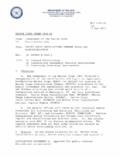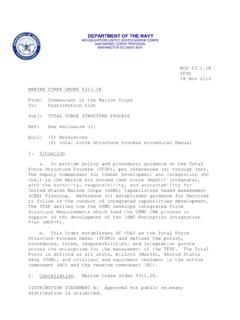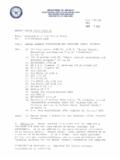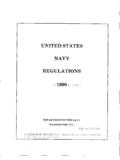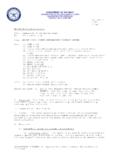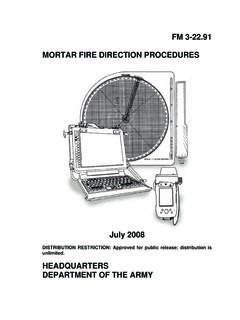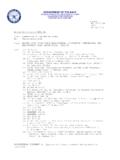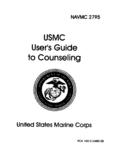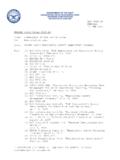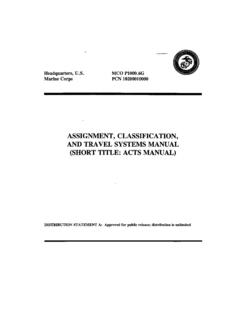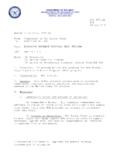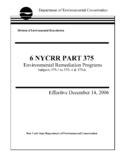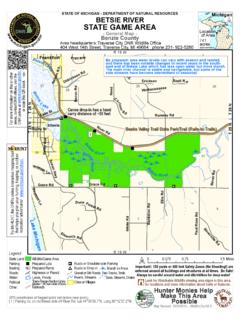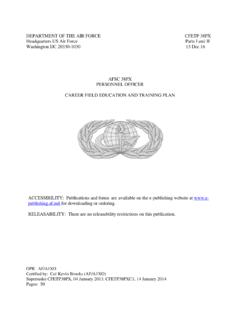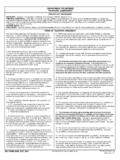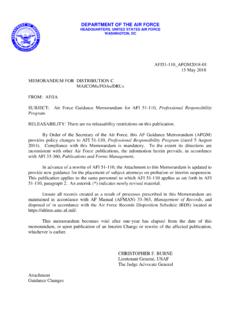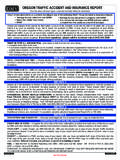Transcription of DEPARTMENT OF THE NAVY HEADQUARTERS …
1 DEPARTMENT OF THE NAVY HEADQUARTERS UNITED STATES MARINE CORPS 3000 MARINE CORPS PENTAGON WASHINGTON, DC 20350-3000 MCO CD&I 2 Dec 2013 DISTRIBUTION STATEMENT A: Approved for public release; distribution is unlimited. Marine Corps Order From: Commandant of the Marine Corps To: Distribution List Subj: ADVOCATE AND PROPONENT ASSIGNMENTS AND RESPONSIBILITIES Ref: (a) CMC Policy Memorandum 01-11, Advocacy (b) CMC Policy Memorandum 02-11, Marine Requirements Oversight Council Charter (c) MCO (d) SECNAV (e) MCO (f) MCO (g) MCO (h) SECNAVINST (i) 10 806 (j) 10 1044 (k) 10 5046 (l) SECNAVINST Encl: (1) Advocates and Proponents in MROC Process (2) Assignment of Advocate Responsibilities (3) Assignment of Proponent (4) Alphabetical Listing of Advocates and Proponents (5) Example Advocate Charter Format 1.
2 Situation a. This Order defines the terms and assigns responsibilities for Marine Corps advocates and proponents consistent with references (a) through (e). This Order also cancels previous definitions and assignments of advocates and proponents except for the assignment of doctrinal proponents in reference (f). b. The Commandant of the Marine Corps (CMC) receives advice and recommendations from multiple sources to support key decisions associated with his statutory responsibilities. These decisions include manpower, acquisition, installations, and resourcing matters directly affecting the capabilities and effectiveness of the Service. MCO 2 Dec 2013 2 c. A series of CMC Policy Memoranda formalizing how input and recommendations would be provided to CMC emerged in 1999. Reference (a) specified that, Each element of the Total Force Marine Air Ground Task Force and the supporting establishment shall have an advocate at HQMC who will represent them in various internal and external processes occurring within the National Capitol Region (NCR) absent the commander.
3 It also explained that the desired end-state is increased communication and representation of operating force requirements and interests within HQMC processes and the Expeditionary Force Development System. d. Three Deputy Commandants (DCs) are assigned unique cross-functional responsibilities spanning a broad range of roles. (1) The Deputy Commandant for Combat Development and Integration (DC, CD&I) is assigned as the Marine Corps integrator with the authority and responsibility to conduct capabilities-based force development. DC CD&I will develop and implement capability portfolio management processes and will be supported by the advocates and proponents providing subject matter expertise. (2) The Deputy Commandant for Plans, Policies and Operations (DC, PP&O), as CMC s operations officer, develops plans and policies, and coordinates the operational deployment and employment of Marines, per reference (b).
4 (3) The Deputy Commandant for Installations and Logistics (DC, I&L) is responsible for planning, programming, policy, and oversight of installations, management of all bases and stations, and for sustainment and logistics support provided to the Marine Corps. 2. Mission. Advocates and proponents shall provide subject matter expertise, insights and coordinated recommendations to the Commandant in order to inform Marine Corps force development and other relevant decisions. 3. Execution a. Commander s Intent and Concept of Operations ` (1) Commander s Intent (a) Purpose. Ensure Marine Corps and DEPARTMENT of the Navy decisions are informed by perspectives of the operating MCO 2 Dec 2013 3 forces as well as from specific functional areas. Assignment as an advocate or proponent does not imply broad authority to establish Service policies and does not replace the chain of command.
5 Advocates represent the operating force and supporting establishment commanders in those policymaking and other organizational management processes occurring within the NCR. Advocates are required to collaborate closely with the operating force chain-of-command to continually ensure timely and effective actions that support service-level force development decisions. (b) End state. Advocates make recommendations in their areas of expertise to support well informed decisions. Advocates and proponents represent the Marine Corps position on their areas to organizations outside and inside of the Marine Corps. (2) Concept of Operations (a) In coordination with the Marine Forces (MARFOR) commanders, advocates identify and recommend priorities for Marine Corps capabilities and deficiencies. The Marine Requirements Oversight Council (MROC) will address advocate recommendations and approve recommendations per reference (b) and enclosure (1).
6 (b) Definitions 1. Advocate. The Deputy Commandant or Counsel for the Commandant assigned to represent the Marine Corps as well as identify and prioritize capabilities required for specific organizational and functional areas. 2. Proponent. A Marine Corps official that assists advocates in representing the Marine Corps and identifying capabilities required for a specific functional area. 3. Community of Interest. A group of stakeholders in a specific organizational or functional area whose collective inputs serves to inform the advocate. (c) Advocate Responsibilities 1. Represent elements of the MAGTF, other operating forces, and the supporting establishment within HQMC MCO 2 Dec 2013 4 policymaking and other organizational management processes and in processes external to the Marine Corps.
7 This requires close collaboration between the advocate and the general officers commanding the MARFORs, Marine Expeditionary Forces (MEFs), their major subordinate commands, and the supporting establishment, to ensure unified action and does not relieve commanders of their inherent responsibilities nor reduce their authority. 2. Represent the coordinated Marine Corps position for assigned areas. In cases where advocate and proponent responsibilities overlap, the advocate may delegate this responsibility to the proponent. 3. Identify capabilities and deficiencies to be considered in Marine Corps force development per reference (c). Advocates shall consolidate and prioritize capability and gap lists from across their organizational and functional areas of responsibility. 4. Coordinate with operating force and supporting establishment commanders to identify and recommend changes to Marine Corps force structure per reference (e).
8 5. Serve as the approval authority for the applicable core and core plus mission essential tasks (METL) per reference (g). 6. Provide formal feedback loop to operating force commanders ( MARFORs and MEFs) and proponents on their recommendations and proposals. 7. In the absence of a proponent, develop the Marine Corps position for assigned functional areas for use internal and external to the Marine Corps, in conjunction with the community of interest. 8. Support the Capability Portfolio Review Board with joint capability area and cross-functional capability (training, installations, and sustainment) subject matter expertise. 9. Support DC, CD&I in the development of an enhanced Marine Corps Enterprise Integration Process that provides the foundation for an iterative Marine Corps Service Campaign Plan.
9 MCO 2 Dec 2013 5 10. Provide guidance to proponents on their specific responsibilities for the development of strategic plans; and identification of capabilities, deficiencies, tables of organization, and METLs. (d) Proponent Responsibilities. Proponents, in coordination with operating force and supporting establishment commanders, will: 1. Develop the Marine Corps position for assigned functional areas for use internal and external to the Marine Corps. 2. Assist advocates by identifying capabilities and deficiencies within their functional area, per reference (c). 3. Assist advocates in identifying and recommending changes to Marine Corps force structure per reference (e). 4. Assist advocates by making recommendations on the applicable core and core plus mission essential tasks, with associated conditions and standards, per reference (g).
10 5. Develop plans for advocate validation and approval by the MROC, when directed. 6. Proponents that do not have an assigned advocate will make recommendations to the advocate that is most appropriate for the specific matter. b. Assignments (1) Advocates. Marine Corps advocates are listed below and their organizational and functional areas of responsibility are delineated in enclosure (2). DC, Combat Development and Integration DC, Plans, Policies, and Operations DC, Aviation DC, Installations and Logistics DC, Manpower and Reserve Affairs DC, Programs and Resources Counsel for the Commandant MCO 2 Dec 2013 6 (2) Proponent. Marine Corps proponent assignments are listed in enclosure (3). c. Coordinating Instructions (1) Advocates and proponents shall not exercise authority for operational employment, force management, or related policy.
